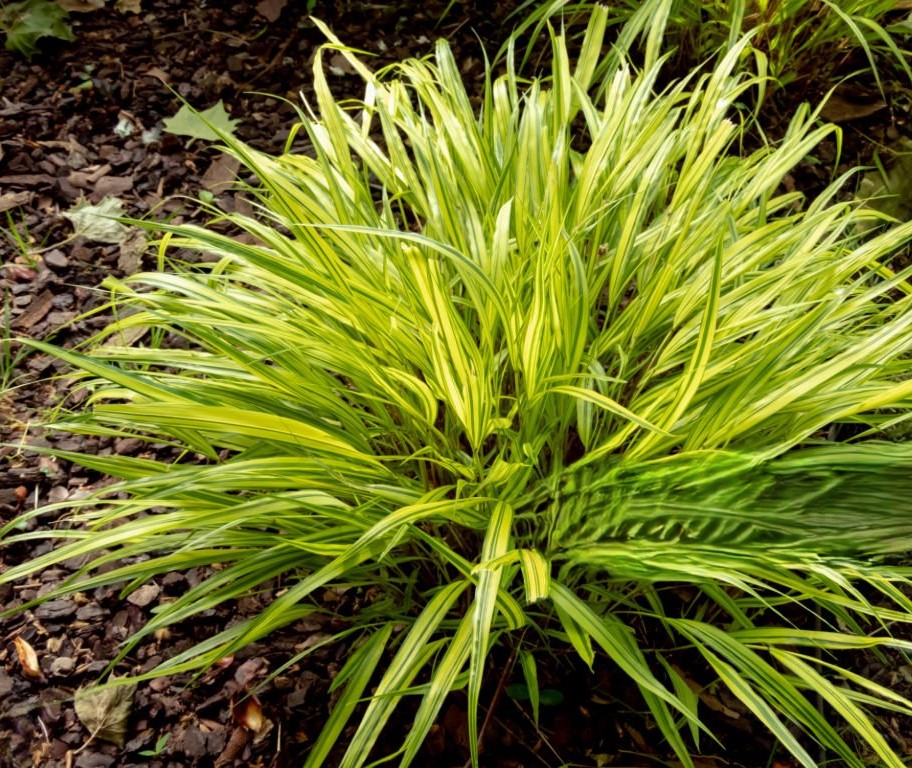Japanese Forest Grass, known botanically as Hakonechloa macra, is a stunning ornamental grass that adds elegance and texture to any garden. Its graceful, arching foliage, which ranges from vibrant greens to golden yellows, creates a serene and lush landscape. If you’re looking to cultivate this beautiful plant and ensure it thrives, here’s a comprehensive guide on providing unlimited care for Japanese Forest Grass.

Understanding Japanese Forest Grass
Characteristics
Japanese Forest Grass is a perennial grass native to the shady forests of Japan. It typically grows 12 to 18 inches tall and can spread up to 24 inches wide. The foliage is its standout feature, often displaying a cascading effect that sways gently in the breeze. Depending on the variety, the leaves can be bright green, golden, or even variegated with stripes of green and white.
Ideal Growing Conditions
To provide the best care for Japanese Forest Grass, it’s crucial to mimic its natural habitat as closely as possible. This grass thrives in:
- Shade to Partial Shade: While it can tolerate some morning sun, it prefers dappled or filtered shade. Too much direct sunlight can scorch the leaves.
- Moist, Well-Drained Soil: Consistently moist soil is ideal. It should be well-draining to prevent waterlogging, which can lead to root rot.
- Cool Temperatures: Japanese Forest Grass does well in cooler climates and can be sensitive to extreme heat.
Planting Japanese Forest Grass
Site Preparation
Choose a location that provides adequate shade and has well-drained soil. Prepare the soil by incorporating organic matter, such as compost, to improve its moisture-retentive properties.
Planting Steps
- Digging the Hole: Dig a hole twice as wide and as deep as the root ball of the plant.
- Positioning the Plant: Place the plant in the hole, ensuring that the top of the root ball is level with the surrounding soil.
- Backfilling and Watering: Fill the hole with soil, pressing gently to remove air pockets. Water thoroughly to help settle the soil around the roots.
Ongoing Care
Watering
Japanese Forest Grass prefers consistent moisture, especially during its first growing season. Water regularly to keep the soil evenly moist but not waterlogged. Mulching around the base can help retain soil moisture and regulate temperature.
Fertilizing
While not heavy feeders, these grasses benefit from a balanced, slow-release fertilizer applied in early spring. Avoid over-fertilizing, as excessive nutrients can lead to weak growth.
Pruning and Maintenance
- Pruning: In late winter or early spring, cut back the previous year’s growth to make way for new shoots. Use clean, sharp scissors or pruners to avoid damaging the plant.
- Division: Every few years, divide the clumps to prevent overcrowding and rejuvenate the plant. This is best done in early spring.
Pest and Disease Management
Japanese Forest Grass is relatively pest and disease resistant. However, watch for slugs and snails, especially in damp conditions. Use organic slug pellets or barriers to protect your plants. Ensuring good air circulation and avoiding waterlogged conditions will also help prevent fungal diseases.
Creative Uses in the Garden
Ground Cover
Its low-growing, spreading habit makes Japanese Forest Grass an excellent ground cover for shady areas. It creates a lush, carpet-like effect that suppresses weeds and adds visual interest.
Container Gardening
Japanese Forest Grass is also well-suited for containers. Its cascading foliage adds a soft, flowing element to container arrangements, making it a versatile choice for patios and balconies.
Companion Planting
Combine Japanese Forest Grass with other shade-loving plants like hostas, ferns, and astilbes for a rich, layered garden bed. Its fine texture contrasts beautifully with the broad leaves of hostas and the delicate fronds of ferns.
Conclusion
Caring for Japanese Forest Grass is a rewarding experience that brings elegance and tranquility to any garden space. By providing the right conditions and regular maintenance, you can enjoy the lush, cascading foliage of this beautiful plant year after year. Whether used as ground cover, in containers, or as part of a larger garden design, Japanese Forest Grass offers endless possibilities for enhancing your garden’s beauty.



